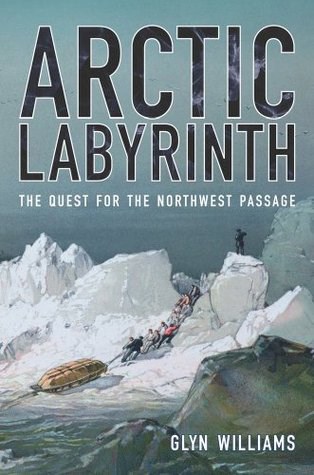Consisting of an ocean, islands and snow-covered land, the ecologically fragile Arctic remains relatively unspoiled due to its geographic isolation.
Encompassing parts of Canada, Norway, Greenland, Iceland and Russia, the region has snowcapped mountains, deep fjords and gigantic ice sheets. Visitors may encounter remarkable wildlife, including polar bears, arctic foxes, walruses, reindeer and whales, plus a wonderful variety of birds.
Glyn Williams has written a fascinating book about the exploration of these northern regions: Arctic Labyrinth: The Quest for the Northwest Passage. For centuries, explorers have sought the passage, a sea route connecting the northern Atlantic and Pacific oceans through the Arctic. From northern Europe, such a route would allow ships to reach the Pacific without making the tortuous journey through the south Atlantic and around Cape Horn. Capt. James Cook, famous explorer of the South Pacific, sailed north in 1778 along the west coast of Canada, past what is now Alaska, through the Bering Strait and into Arctic waters. Although he failed to find the passage, he produced excellent charts that helped to open the hugely profitable maritime fur trade.
In 1845 came the Franklin expedition. Called by some the greatest disaster in Arctic history, the English expedition ended when Franklin’s ships became trapped in ice. For three years, the crew lived in isolation, battling sickness and starvation, amid the most horrendous Arctic conditions. For decades afterwards, new expeditions were launched to search for Franklin’s ships as well as any crew members who may have survived. Commander Robert McClure of the British navy traversed the Northwest Passage from west to east in the years 1850 to 1854, partly by ship and partly by sledge. During that time, McClure’s ship was trapped in the ice for three winters. Finally he and his crew — who were by that time dying of starvation — were found by a group of rescuers. McClure and his crew were considered the first to transit the Northwest Passage, although they did not do it by water alone. As a footnote, Parks Canada searchers discovered the wreckage of HMS Erebus two years ago, while in September of this year, a British research group uncovered HMS Terror, Franklin’s other sunken vessel.
Traditionally, Arctic peoples have subsisted mainly through hunting, fishing, herding and gathering wild plants for food. Over time, they found many different ways to adapt to the harsh Arctic climate, developing warm dwellings and clothing to protect them from the frigid weather. They also became adept at predicting weather patterns and navigating in boats and on sea ice. In 2008, Fred Bruemmer published a stunning hardcover book full of beautiful photos and illustrations about the Inuit, whom he lived among in the 1960s. Arctic Visions: Pictures from a Vanished World is a visual tribute to the Inuit before their transition to a more technology-based society. The photos capture the feeling of isolation in the desolate far north, yet there is much beauty, too. Bruemmer’s long-exposure images are haunting, full of luminescent waters and glowing glacial ice.
Arctic inhabitants are uniquely vulnerable to warming trends, which cause ice to disappear, endangering indigenous livelihoods and leading to rising sea levels, coastal erosion, melting permafrost and volatile weather. The release of methane gas from melting ice and thawing permafrost is a major climate threat. A greenhouse gas 20 times more potent than carbon dioxide, methane is a catalyst in a vicious circle: Emissions of carbon gases precipitate warming, warming melts permafrost, the disappearance of permafrost release gases, and gases precipitate warming. Veteran journalist Ed Struzik has beautifully documented the process in the book The Big Thaw: Travels in the Melting North.
For decades, the Arctic was on the front lines of the Cold War. Today, the region is changing at an unprecedented rate due to climate change, shipping, the extraction of natural resources and diplomatic jostling over sovereignty. Alun Anderson’s After the Ice: Life, Death and Geopolitics in the New Arctic, examines a wide range of political and legal issues, from geographical disputes to shipping in the Northwest Passage, to countries claiming rights to the seabed, to the protection of fisheries. The book provides clear analysis and insight into the future of the Arctic.
All of these books are available from your local libraries.
A Good Read is a column by Tri-City librarians that is published on Wednesdays. Shirley Chan works at Coquitlam Public Library.



